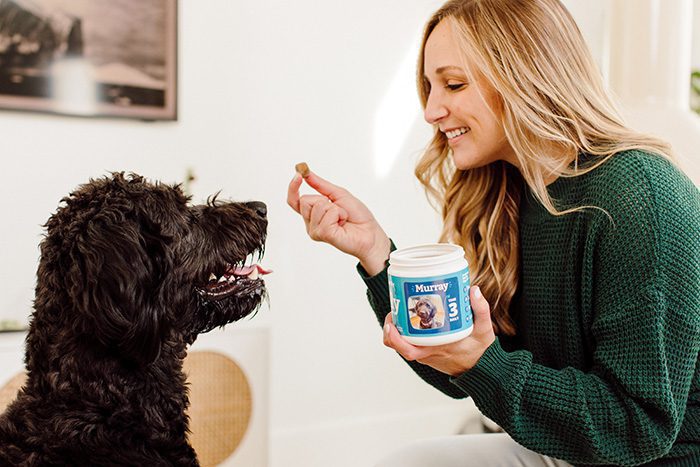Whether you’re a first-time owner or a seasoned enthusiast, understanding the unique needs of English Labradors is key to fostering a thriving companionship.
Renowned for their gentle temperament and versatility as family pets or working dogs, this beloved breed requires tailored care to maintain their health and happiness.
From dietary essentials to training insights, this guide cuts through the noise to deliver actionable advice you can trust—because every wagging tail deserves a well-informed advocate.
Introduction
Renowned for their robust build and gentle demeanor, English Labradors have long been celebrated as steadfast companions and versatile working dogs.
Unlike their American counterparts, this stocky variant of the Labrador Retriever thrives in both family homes and specialized roles, from therapy work to competitive sports.
Their calm temperament and loyalty make them a top choice for first-time owners and seasoned handlers alike.
Yet, beneath their iconic appearance lies a world of unique traits often overshadowed by general Labrador guides. This article delves into:
- Coat variations that define their weather-resistant elegance
- Health considerations are critical for longevity and vitality
- Key distinctions from American Labradors in build, energy, and purpose
For prospective owners, understanding these nuances is not just informative—it’s essential.
While their affectionate nature is universally adored, subtle differences in exercise needs, genetic predispositions, and even tail carriage can shape daily care routines.
Recognizing what sets English Labradors apart ensures a lifelong bond built on informed care. Let’s uncover the breed’s hidden layers, empowering you to make the best choice for your lifestyle.

History of the English Labrador
The story of the English Labrador begins not in its namesake region but on the rugged shores of Newfoundland, Canada.
In the early 1800s, fishermen relied on the St. John’s water dog—a hardy, water-loving breed—to retrieve nets, haul ropes, and assist with catches.
These dogs, with their short coats and innate swimming prowess, became the genetic blueprint for what would later evolve into the Labrador Retriever.
Their adaptability and work ethic caught the attention of English nobility, setting the stage for a transatlantic journey that would redefine the breed.
By the 1830s, the Earl of Malmesbury had imported several St. John’s dogs to England, where they were refined into skilled gun dogs for retrieving waterfowl.
Their intelligence and gentle mouths—critical for carrying game undamaged—made them indispensable to hunters.
The Kennel Club (England) formally recognized the breed in 1903, cementing its status as a distinct working companion.
Over time, selective breeding in the UK emphasized traits like a stocky build and calm temperament, aligning with the needs of show rings and family homes.
The 20th century marked a pivotal divergence between English and American Labradors:
- English Labs were bred for conformation shows, prioritizing a broad skull, shorter muzzle, and mellow disposition.
- American Labs leaned into fieldwork, favoring leaner frames and higher energy for competitive trials.
This split, driven by regional breeding goals, created two distinct lines under the same breed umbrella.
Breeding standards in the UK further shaped the English Labrador’s identity. Titles like SH CH (Show Champion) became badges of prestige, reflecting adherence to rigorous conformation criteria.
These standards prioritize balanced proportions, a thick “otter” tail, and a coat that repels water—a nod to their aquatic roots.
Today, UK-bred English Labradors are celebrated not just for their looks but for their versatility, bridging roles as therapy dogs, service animals, and beloved household companions.
Physical Characteristics
The English Labrador’s physique is a testament to its heritage as a rugged working companion, refined over centuries for both strength and adaptability.
With a stockier build than their American counterparts, males typically weigh 65-80 lbs, while females range from 55-70 lbs, proportions aligned with UKC and CKC breed standards.
This robust frame, characterized by a broad chest and muscular neck, supports their role as versatile retrievers and enduring family guardians.
- Coat variations further distinguish the breed: a thick, water-resistant double coat provides insulation in cold climates, a trait honed from their origins as Newfoundland fishing aides.
While some American Labs sport thinner coats suited to agility work, English Labradors retain this dense layer, ensuring resilience whether splashing through marshes or lounging at home.
Their otter-like tail, thick at the base and tapering to a point, serves as both rudder and balance in water. Unlike the whippy tails of American lines, this feature, carried low and level with the spine, reflects their deliberate breeding for power over speed.
- Height standards reveal subtle transatlantic nuances: UK-bred males often measure 56-57 cm (22-22.5 inches) at the withers, prioritizing compact strength, while US standards allow up to 62 cm (24.5 inches), accommodating a slightly taller silhouette.
These variations, though minor, underscore how regional breeding goals shape the breed’s physical identity.

Temperament and Personality
Renowned for their balanced disposition, English Labradors thrive as adaptable companions, blending gentle patience with an innate desire to connect.
Unlike their American counterparts, they exhibit a calm, laid-back energy that aligns seamlessly with family life or therapeutic roles.
Their ability to remain composed in dynamic environments—whether comforting a child or navigating crowded spaces—has made them a preferred choice for therapy work.
This breed’s playful side shines through in interactive play sessions, though their focus may wander during repetitive training.
Positive reinforcement and varied exercises are key to maintaining engagement, as monotony can lead to distractions.
- Ideal for service roles: Their steady temperament and eagerness to please simplify training for tasks like mobility assistance or emotional support.
- Contrast with American Labs: While both share intelligence, American lines often display higher energy suited to field trials, whereas English Labs prioritize companionship and measured activity.
Ultimately, their blend of affection and adaptability cements their status as versatile partners, whether lounging at home or excelling in structured roles.
Health Considerations
While English Labradors are celebrated for their resilience, their stocky build and genetic heritage necessitate proactive care to address breed-specific risks.
Understanding these health considerations ensures a longer, happier life for your companion.
Common Hereditary Issues
- Joint Health: Hip and elbow dysplasia are prevalent in Labradors, often linked to their robust frame. Regular screenings and weight management can mitigate these risks.
- Eye Disorders: Conditions like cataracts and progressive retinal atrophy (PRA) may arise, underscoring the need for annual veterinary eye exams.
- Cardiac Health: Heart disease, though less common, requires monitoring through routine check-ups.
Obesity Tendencies
Their slower metabolism and sturdy physique make English Labradors prone to weight gain, which exacerbates joint issues and reduces longevity. Combat this with:
- Portioned meals: Avoid free-feeding; opt for measured servings aligned with activity levels.
- Low-impact exercise: Swimming or brisk walking balances calorie burn without straining joints.
Preventive Care Strategies
Prioritize regular veterinary visits to catch early signs of bloat—a life-threatening condition where the stomach twists, common in deep-chested breeds. Preventive measures include:
- Avoid vigorous activity immediately after meals.
- Using slow-feed bowls to reduce rapid eating, which correlates with bloat risk.
By addressing these risks through informed care, you’ll nurture a thriving English Labrador ready to embrace every adventure.
Training and Care
English Labradors thrive on routine and structure, yet their intelligence and occasional distractibility demand a thoughtful approach to training.
While their calmer temperament simplifies leash manners and household obedience, their curiosity can lead to wandering focus during sessions.
Patience and consistency are key—break tasks into short, engaging bursts to maintain interest.
Exercise Requirements
Despite their laid-back reputation, these dogs inherit the Labrador’s legendary energy.
Aim for at least two hours of daily activity, blending vigorous exercise like swimming or fetch with exploratory walks to stimulate their senses.
Their water-repellent coats and muscular build make them natural swimmers, an ideal outlet for burning energy while protecting joints.
Grooming Essentials
The breed’s thick double coat sheds moderately year-round and heavily during seasonal transitions.
Brush 2–3 times weekly with a slicker brush to remove loose fur and distribute skin oils, reducing matting and allergens.
Pay extra attention to the undercoat during spring and fall shedding periods.
Mental Stimulation
Boredom can lead to destructive habits in this sharp-witted breed. Rotate interactive puzzle toys and schedule regular socialization with people and other dogs to channel their smarts constructively.
Training sessions disguised as play, like hide-and-seek with treats, keep their minds agile while reinforcing commands.
English vs. American Labradors
The divide between English and American Labradors extends beyond geography—it’s a tale of two distinct breeds shaped by purpose and preference.
While both share the Labrador name, their differences in build, energy, and lifestyle suitability are profound.
Physical Differences
- English Labs: Defined by a stockier, muscular frame with a broad skull and shorter muzzle, they exude strength without sacrificing elegance. Their thicker double coat offers superior insulation, a nod to their cold-water heritage.
- American Labs: Leaner and more athletic, with a slimmer build and elongated muzzle, they prioritize agility for fieldwork. Their coat is often shorter and less dense, aligning with their high-energy roles.
Temperament Contrasts
- English Labs thrive as calm, patient companions, content with leisurely walks and cuddle sessions. Their steady demeanor makes them ideal for families and therapy work.
- American Labs burst with enthusiasm, driven by a high-energy, task-oriented mindset. Bred for hunting and agility trials, they excel in dynamic environments but may overwhelm quieter households.
Lifestyle Fit
Choosing between the two hinges on your daily rhythm:
- Opt for an English Lab if your life revolves around companionship, therapy roles, or relaxed outdoor adventures. Their adaptability suits apartments and homes alike.
- Choose an American Lab if you’re an active individual or family engaged in hiking, hunting, or competitive sports. Their drive and stamina align with high-energy pursuits.
Interestingly, some enthusiasts blend both lines for a balanced companion—proof that the Labrador’s versatility transcends borders.
Whether you prioritize a laid-back ally or a spirited partner, understanding these distinctions ensures a match that enriches your life for years to come.
Choosing and Adopting an English Labrador
Bringing home an English Labrador is a decision that blends excitement with responsibility. Whether through a breeder or rescue, prioritizing ethical practices ensures you gain a loyal companion aligned with your lifestyle.
Reputable Breeders
Seek breeders who emphasize health testing and have a track record in show ring success, as these indicators often reflect adherence to breed standards. Ethical breeders prioritize genetic health, screening for conditions like hip dysplasia, and welcome questions about their dogs’ lineage.
Key Questions to Ask
- Inquire about health certifications (e.g., OFA ratings) and request documentation.
- Ask to meet the puppy’s parents to assess temperament and conformation, a practice that builds transparency.
Adoption Options
While English Labs are more prevalent in the UK, dedicated rescues like Labrador Retriever Rescue organizations in North America often have show-line dogs available. Adoption not only saves lives but also offers a chance to provide a home to older dogs, who may already exhibit the breed’s hallmark calmness.
Cost and Commitment
Puppies from reputable breeders typically range $800–$1,500, reflecting health testing and care investments . Beyond financial costs, remember Labradors thrive on companionship—plan for 10–12 years of dedicated care, including daily exercise, grooming, and vet visits .
By approaching adoption or breeder selection thoughtfully, you’ll forge a bond rooted in trust and mutual respect, ensuring your English Labrador becomes an irreplaceable part of your journey.
Conclusion
The English Labrador stands as a testament to centuries of thoughtful breeding, blending robust physicality with an unwavering devotion to companionship.
From their thick, water-resistant coats honed for cold climates to their calm, patient temperament that thrives in family settings, every trait reflects a heritage of purpose and adaptability.
UK breeding standards have preserved their hallmark features—a broad skull, sturdy build, and that iconic “otter tail”—ensuring they remain as capable in show rings as they are on leisurely hikes.
For those seeking a loyal partner, whether as a therapy dog, a family guardian, or a versatile working companion, the English Labrador’s versatility and eagerness to please make them an unmatched choice.
Their balanced energy accommodates both quiet evenings and active adventures, proving they’re more than just pets—they’re lifelong allies.
Ready to welcome this extraordinary breed into your life? Explore reputable breeders who prioritize health and temperament, or connect with rescues offering dogs in need of loving homes.
Whether you choose a puppy or an adult, your journey with an English Labrador promises boundless joy and companionship. Take the first step today—your perfect match awaits.



